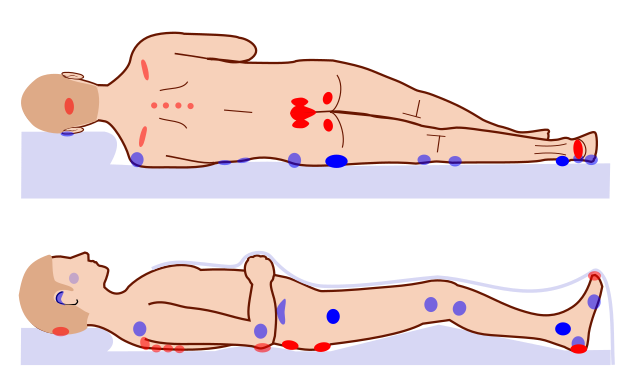Does Moisture Cause Pressure Ulcers?
Pressure ulcers are not the most difficult thing to diagnose for informal caregivers. But some of you might be confusing moisture lesions with pressure ulcers. Moisture lesions are quite common among bedridden elderly folks, and they occur in regions where the skin is in prolonged contact with bodily fluids such as urine, feces, or sweat.
But does that mean moisture has nothing to do with pressure ulcers? Does moisture cause pressure ulcers?
Moisture alone does not cause pressure ulcers. Prolonged contact with bodily fluids can lead to moisture lesions, which is not the same as pressure ulcers. However, moisture, in combination with other factors such as strain, friction, and external pressure can facilitate the growth of pressure ulcers.
Prolonged contact with bodily fluids can damage the skin— making it vulnerable to pressure ulcers and other musculoskeletal disorders.
An Israeli study concludes that pressure ulcers are more likely to develop on moist skin, especially during patient repositioning or transportation. The wetness increases the skin-support coefficient of friction.
I found this particular research interesting as most caregivers associate bedsores with bedridden people. The study says bedsores can occur in bedridden people during transport— and not necessarily during a rested state.
Difference between a pressure ulcer and moisture lesion
Pressure ulcers (also known as bedsores) are damage that occurs in the muscle tissue, just beneath the skin. It is commonly seen in bedridden people or long-term care occupants. Pressure ulcers are caused due to multiple factors— some of the factors include pressure, friction shear, and strain.

Pressure ulcers occur in bony areas of the body such as the shoulder, thigh, elbow, hips, ears, knee, heel, etc. Kindly refer to the image above. Moreover, they can appear like a blister or a purple patch. And they are circular in shape. In some cases, you will see a swelling over a bony region that is constantly under pressure.
On the other hand, a moisture lesion is a form of dermatitis caused due to prolonged exposure to incontinence. Unlike pressure ulcers, moisture lesions are not caused due to multiple factors. However, they are challenging to diagnose. The loss of skin can vary depending on the degree of the injury. Hence, they don’t always have the same color.
How do I know it’s a moisture lesion and not bedsore? Lesions are a result of loss of skin due to loss of protective natural oils (contained within the skin). A moisture lesion occurs close to the buttocks, breasts, or the back of the knee. Basically, near regions where there is a skin fold. They can hurt a bit when touched with a fingertip.
How to keep bedridden patients dry?
Caregivers often struggle to keep a bedridden person dry. Their primary focus should be to keep the bed dry. How do you manage to keep the bed dry at night?
You can begin by using a zippered waterproof mattress cover. If the bedridden person happens to relieve himself/herself in sleep, you can pad-dry the mattress without waking them up.
In addition to using the waterproof mattress cover, you can place a washable underpad beneath the bedridden person. You can do it before they go to sleep at night. Some underpads also come with handles that enable you to move or reposition the person with ease.
